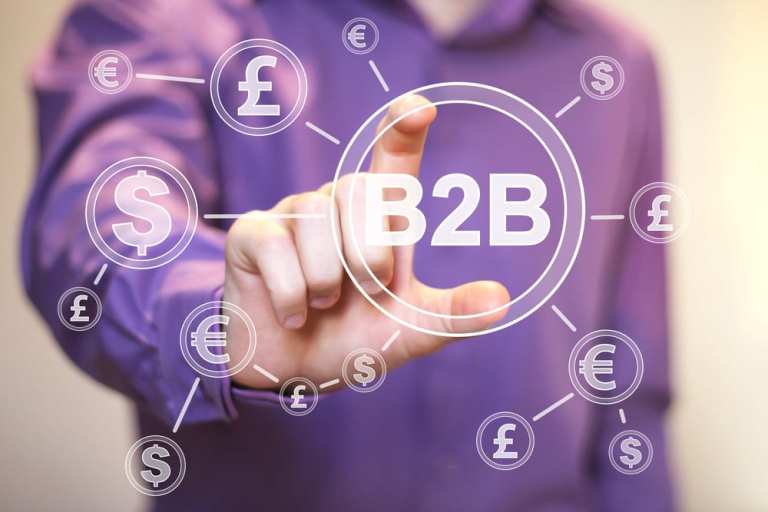
B2B payments innovation continued to heat up in 2019, with an ecosystem focused on transaction speed and data integration finding new opportunities to build innovative solutions that address some of the biggest B2B payment friction points.
Accelerating transaction speeds, the migration to the cloud, and an emphasis on data integration were major forces for B2B payments innovation in 2019.
But sometimes, technology that solves one problem can introduce another.
Andres Ricaurte, senior vice president and global head of Payments at Mphasis, and Cindy O’Neill, president of Priority Commercial Payments, recently mused to PYMNTS on their thoughts about the progress of B2B payments modernization, and what’s ahead for the arena as innovators work to not only tackle the pain points of yesterday, but anticipate the biggest challenges of tomorrow.
One of the largest disruptors that B2B payments saw in 2019 was the convergence of accounts receivable (AR) and accounts payable (AP) — a trend that stems from businesses’ heightened demand for automation and data integration. According to Ricaurte, this shift will continue into 2020.
“Although they are traditionally seen as disconnected processes, the procedures for making payments — AP — and receiving payments —AR — will become increasingly intertwined,” he said. “An AP problem is someone else’s AR problem. Looking at both sides of the equation will allow B2B payment providers to identify major opportunities to unlock value.”
O’Neill agreed, predicting, “Technology solutions will support touchless processing, where the payments can be initiated from the accounts payable platform, and processed seamlessly with the accounts receivable platform.”
The Moving Target of B2B Friction
While AR-AP connectivity addresses key pain points for buyers and suppliers to ensure the flow of cash from one business to another occurs as seamlessly as possible, it’s a trend that has also introduced new challenges for service providers and their business customers.
For instance, as AR and AP technologies integrate and share data, privacy and security concerns have become key barriers to adoption of these automated technologies, according to O’Neill.
“The main reason individual suppliers do not adopt programs that allow them to take advantage of the automation and reduced cost of acceptance is the need to capture personal information at the time of the application,” she said, highlighting the onboarding challenges that vendors face when adopting integrated, automated AR solutions. “Home address, SSN [Social Security number] — at least the last four digits — and birthday are required for KYC [know your customer] on all privately-held businesses.”
The pain point of onboarding becomes even more challenging when AR and AP solutions integrate with more end-users. Forcing a supplier to connect into a buyer’s AP solution, for example, can limit adoption, she said.
B2B Payments Digitization’s Next Frontier
As the B2B payments landscape hustles to keep up with the moving target of friction, progress has certainly been made in the acceleration, digitization and transparency of corporate transactions. In the U.S. alone, efforts like Same Day ACH and the Federal Reserve’s upcoming FedNow service are opening up the opportunity for business payments to modernize.
Yet Ricaurte warned that there is still a long road ahead to modernization, and as new technologies emerge, new challenges do, too.
“The road towards a modern, open and flexible B2B payments infrastructure is nowhere near complete,” he said. “The banks’ transformation agenda is still underway, and while many FinTechs have developed slick digital solutions, particularly for cross-border payments, most still rely on back-end banking and payments systems that are in the midst of being re-architected.”
Digital money and blockchain are becoming important topics of discussion in both private and public sectors around the world, he added. O’Neill also said more businesses are inquiring about cryptocurrency as a technology to address their payments security concerns. But while blockchain and crypto can address one problem, like privacy, they can introduce another, like interoperability with FinTech solutions, or regulatory uncertainty.
New Challenges, New Tech
The cyclical nature of B2B payments innovation means new technology can introduce new challenges, which can introduce a new opportunity for technology to address friction, and so on.
With this in mind, O’Neill said improvements in optical character recognition will be an important innovation in addressing the challenge of high volumes of digital data and the migration away from paper.
And according to Ricaurte, the ongoing migration to the cloud will influence the way businesses adopt new technologies, although at the same time will contribute to the often overwhelming deluge of data and the rising pressure for emerging technologies to integrate with each other.
With this in mind, Ricaurte said there are several technologies that will be instrumental in addressing not only the friction points of today, but also those of tomorrow.
“AI [artificial intelligence] and machine learning will take center stage,” he predicted, pointing to the continued digitization of B2B transaction data and documents that introduces the challenge for technology providers to make use of that information and address friction linked to cash forecasting, payments optimization and spend management.